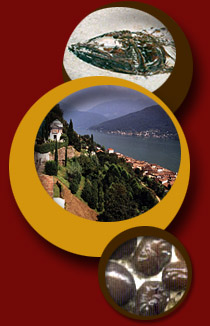 |
|
Concerning the Australian Lungfish,
Neoceratodus forsteri
Conservationists in Queensland are fighting to save one
of the few remaining unchanged habitats of the Queensland lungfish, and
we need the help of concerned scientists overseas to get the species,
and the environment, fully protected. If the environment is ruined, the
lungfish could become extinct, and we'd appreciate it if you could send
a note to the address below stating why you feel the lungish is important
to science.
The environment of the Australian lungfish, Neoceratodus forsteri, is
under threat. Three major lungfish habitats in south east Queensland,
in the Brisbane, Mary and Burnett Rivers, have already been altered by
the construction of weirs and dams, and more water impoundments are planned
in the near future. Fluctuating water levels in existing reservoirs damage
the spawning sites and juvenile habitats by destroying aquatic plants
in the shallows where most eggs are laid, and this reduces recruitment
of young fish to the adult population. If the remaining riverine habitats
are altered in the same way, recruitment could fall to critically low
levels. In addition, detailed scientific studies on the ecology of lungfish
in all of its current habitats have not been done, and we do not even
have an estimate of the size of the present adult population.
Conservation agencies in Queensland are preparing an application to have
the lungfish listed in Schecule 1 of the Endangered Species Protection
Act, 1993. The lungfish is already protected by Queensland state law,
and is on the CITES Schedule 2 List of species threatened by trade. This
is not enough. Current demands by agriculture for increasing amounts of
water for irrigation could result in changes to the few unaltered stretches
of the three major rivers where lungfish are still found, and the species
may not be able to spawn successfully in the altered habitats.
Despite the fact that the needs of agriculture in the coastal regions
affected by the proposed reservoirs could be met by improved management
practices, the Queensland Government intends to push ahead soon with two
large new impoundments on the Burnett River, where the lungfish was first
discovered. To date, the efforts of conservationists have not achieved
a decision to reverse the proposals to build the weirs, despite private
assurances that they are correct in their assessment of risk to lungfish
populations, because "a political decision has been made".
Conservation agencies in Queensland are appealing to scientists who have
an interest in the Australian lungfish to support their application for
protection of the habitat and the species. Please write a short note explaining
your perception of the importance of N. forsteri for science and
send it to:
Mrs Pam Soper
Wide Bay Conservation Council
29 Watson's Road
Kelly's Creek
Bargara
Queensland 4670
Australia
who is co-ordinating the application. Her FAX number is (international
code) 61 71 591919.
If it is more convenient, send your comments on e-mail to me (a.kemp@mailbox.uq.oz.au)
and I will pass the messages on to the Wide Bay Conservation Council.
Please find the time to send a short comment. Thank you, on behalf of
the lungfish, for your assistance.
Yours sincerely
Anne Kemp (Dr)
|
|














